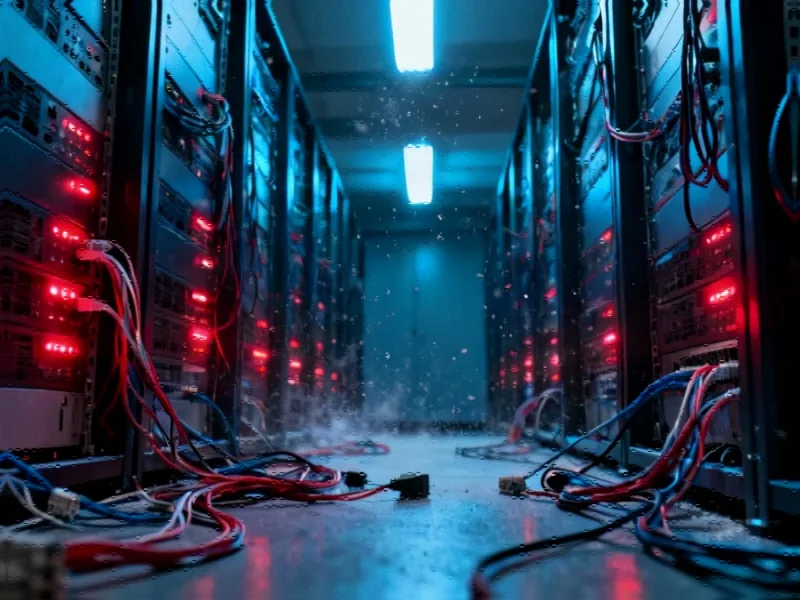The Domino Effect of Cloud Service Disruption
In the early hours of Monday, October 20, 2025, a significant outage at Amazon Web Services (AWS) sent shockwaves through the global digital ecosystem. The disruption, originating from the US-East-1 region, demonstrated just how interconnected modern digital services have become. While affecting numerous sectors including banking and government services, the gaming industry experienced particularly visible impacts, with popular titles like Fortnite, Roblox, and PlayStation Network services becoming inaccessible to millions of users worldwide.
Understanding the Technical Breakdown
The AWS outage triggered a cascade of failures across gaming platforms, affecting core functionalities including player authentication, matchmaking services, and cloud-based save systems. Even games installed locally on devices became unplayable when their online verification systems failed. This incident highlights the critical dependency that modern gaming has developed on cloud infrastructure providers.
As recent industry analysis confirms, the gaming sector’s migration to cloud-based architectures has accelerated dramatically in recent years. This shift, while enabling unprecedented scalability and global connectivity, has also created single points of failure that can impact millions simultaneously.
The Broader Industrial Context
This gaming disruption occurs against a backdrop of wider industry developments in enterprise computing infrastructure. The recent sunsetting of Windows 10 has prompted many organizations to reconsider their platform strategies, with some exploring alternative operating systems to reduce vendor dependency.
Meanwhile, in the financial sector, related innovations in artificial intelligence are transforming how institutions manage operational risk and service continuity. These parallel developments across different industries highlight the universal challenge of maintaining service reliability in an increasingly cloud-dependent world.
Infrastructure Alternatives and Market Response
The outage has reignited discussions about infrastructure diversification strategies. Notably, Xbox services remained operational during the incident, running on Microsoft’s Azure cloud platform rather than AWS. This successful isolation demonstrates the value of multi-cloud architectures for critical services.
This incident coincides with significant market trends in enterprise computing, where organizations are increasingly exploring open-source solutions to maintain operational flexibility. The growing adoption of Linux distributions represents one response to the risks of vendor lock-in and centralized infrastructure failures.
Security Implications and Industry Preparedness
While this incident resulted from technical failures rather than malicious activity, it underscores the vulnerability of centralized infrastructure. Recent industry developments in cybersecurity highlight the ongoing battle against sophisticated threats that could potentially exploit similar infrastructure weaknesses.
The gaming industry’s experience mirrors challenges faced across other sectors. As evidenced by recent technology incidents in industrial infrastructure, the concentration of critical services on limited platforms creates systemic risks that require comprehensive mitigation strategies.
Financial Technology Parallels
The gaming outage shares striking similarities with disruptions in other digital sectors. The recent technology incidents in financial services demonstrate how credential verification and authentication systems represent critical vulnerabilities across multiple industries when cloud services experience interruptions.
Recovery Patterns and Long-term Implications
Amazon confirmed identifying the root cause and working through a backlog of requests, but the multi-hour restoration process highlighted the challenges of recovering complex distributed systems. The gradual return to normal operations followed patterns observed in previous cloud outages, with services stabilizing unevenly across different regions and applications.
This incident serves as a stark reminder that as the gaming industry continues its shift toward digital distribution and always-online experiences, the underlying infrastructure’s reliability becomes paramount. The outage raises important questions about contingency planning, redundancy measures, and the industry’s collective dependence on a handful of cloud providers.
Looking Forward: Industry Resilience
The AWS disruption represents more than a temporary inconvenience—it’s a wake-up call for the entire digital ecosystem. As games increasingly function as services rather than products, their availability becomes directly tied to the stability of underlying cloud infrastructure. This reality demands more robust failover mechanisms, clearer communication protocols during outages, and potentially greater infrastructure diversification across the industry.
The incident also highlights the need for developers to implement more graceful degradation features, allowing games to maintain limited functionality even when backend services experience partial failures. As the industry digests the lessons from this outage, we can expect increased investment in resilience engineering and more sophisticated approaches to managing cloud dependencies.
This article aggregates information from publicly available sources. All trademarks and copyrights belong to their respective owners.
Note: Featured image is for illustrative purposes only and does not represent any specific product, service, or entity mentioned in this article.



